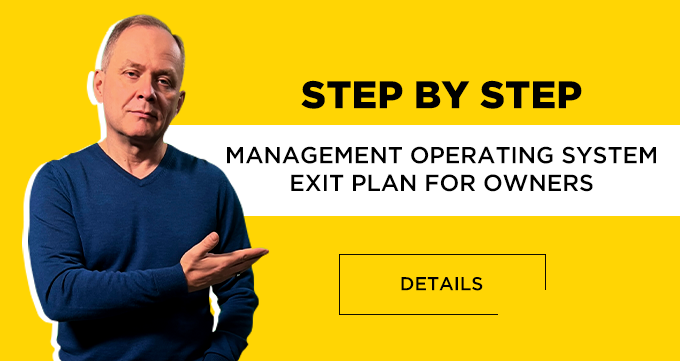What is a VFP and why does every employee need one?
If an employee doesn't understand what result they should achieve, they cannot be effective. They will be busy, they will react, they will even get tired. But that doesn't mean they will bring value to the business. That's why I always start with the concept of VFP (Valuable Final Product) when I help business owners build a manageable company.
A VFP is not a list of tasks, not a job standard, and not a set of functions. It is a specific, measurable result that you are willing to pay for. If the result is not defined, the employee cannot be managed. And everything invested in their position: salary, time, and resources, will be wasted. This is one of the reasons why companies stagnate or decline, even with a strong product.
VFP is the foundation of manageability
At Toyota, where every process is described, measured, and optimized, the VFP is embedded in the entire company's mindset. Every worker on the assembly line, every engineer, and every manager has a clear understanding of what constitutes the valuable product of their work. This allows them to minimize losses, reduce rework, and consistently grow in efficiency. Not because people "try hard," but because they know what result they are working towards.
A McKinsey study in 2023 showed that companies with clearly defined roles and results are 37% more likely to achieve their strategic goals. This is directly related to cognitive clarity. When an employee knows exactly what is expected of them, they make decisions faster, with less stress, and with higher motivation.
Psychologist Daniel Pink, in his work on motivation, emphasizes that one of the main factors of intrinsic engagement is a sense of purpose. A VFP is exactly that purpose, translated into the language of action.
What a VFP looks like in a real company
Here are examples for key positions that we regularly work with in our Business Booster projects.
Office Manager.
The VFP is the seamless support of the office. This includes resource savings, supply management, document flow, and support for internal processes so that no department is idle. We worked with a development company in Almaty: after implementing the Office Manager's VFP, they reduced internal requests between departments by 47%. This is because the work became transparent and predictable.
Accountant.
The VFP is financial transparency and timely reporting. This means: no tax confusion, no budget deviations, no overdue accounts receivable. When an accountant in an IT company from Ukraine switched to a daily dashboard for calculations, the owner saw for the first time where money was actually being lost. This led to a start in cutting costs by 18% in 2 quarters.
The VFP is a timely staffed team. Not resumes in the database. Not the interview process. But specific employees who have started working and fit the company's culture. We had a case where a company was losing 1.2 million rubles per month due to unfilled vacancies. After implementing an evaluation system and an entry funnel, the hiring speed increased by 3 times.
Executive Assistant.
The VFP is a managed calendar, no meeting disruptions, and effective communication. A good assistant frees up dozens of hours for the owner. A bad one adds chaos. This is a critical point, especially for fast-paced companies.
Sales Manager.
The VFP is cash in the bank. Not calls, not CRM, not reports. But revenue, closed deals, and client retention. When we were overhauling the motivation system in one B2B company, it turned out that managers were doing 60% of actions that didn't lead to a sale. After implementing clear VFP metrics, they saw a 22% increase in revenue in 3 months without increasing the headcount.
VFP affects business valuation
If you are thinking about selling your business, attracting an investor, or simply want to understand the company's real capitalization, it is impossible without implementing a VFP.
Business valuation includes the concepts of manageability and reproducibility. An investor looks at: Can the company operate without the owner? Is there a system that will maintain the result if an employee is replaced? If not, the business's value decreases. This is because the risk is high.
Now, look at your company: how many employees have a VFP documented in writing, with specific metrics?
How to implement a VFP: A phased approach
- The first step is to formulate the VFP for each key role. This can be done using the methodology I provide at the free masterclass "How to strengthen your team, build a solid business foundation, and reach a new level."
Registration via the link https://go.bbooster.online/ezgu
- The second step is to introduce personnel evaluation criteria. A VFP without measurement is a fantasy. The evaluation should be clear: the employee should be able to see for themselves whether they are succeeding or not.
- The third step is to learn to manage results, not people. Then you can build strong departments, replace people without losses, and grow your company without chaos.

